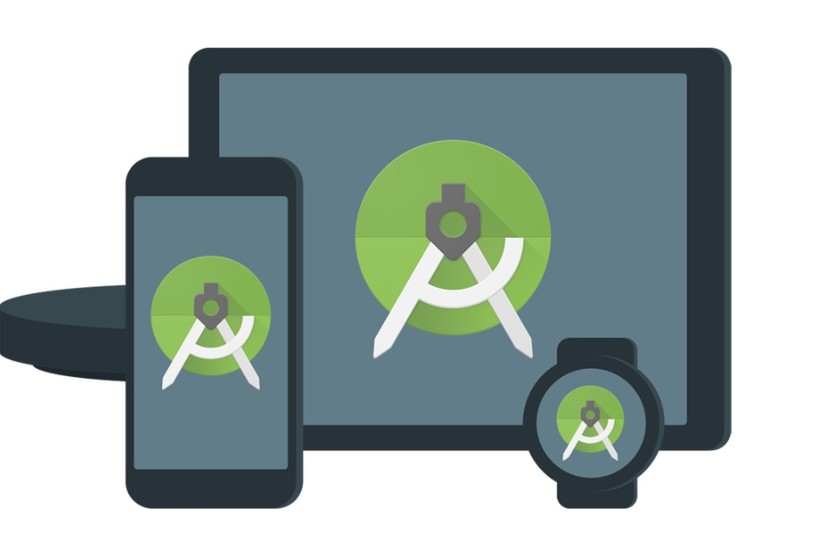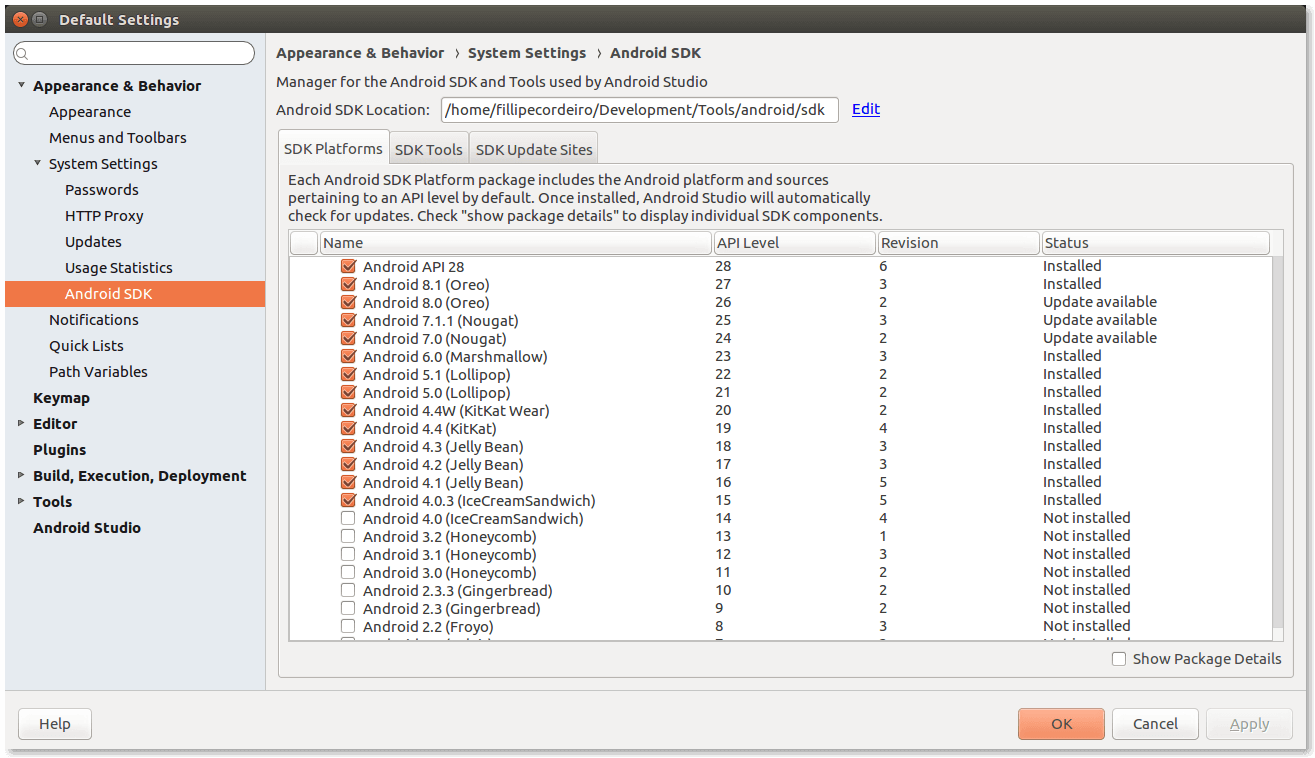Cd /Users/mac-user/sdk folder/tools &&./android where mac-user is your username to the MAC For example in my own case, executing the following opens the SDK manager for me. Download Android SDK Build-tools 19.1.1, 20.0.0, 21.1.1, 22.0.0, 23.0.0, 23.0.0, 23.0.0, 24.0.0, 24.0.0, 24.0.0, 24.0.0, 25.0.0, 25.0.0, 25.0.0, 25.0.0.
Everything You Need to Set Up Your Development Environment
NVIDIA SDK Manager provides an end-to-end development environment setup solution for NVIDIA’s DRIVE and Jetson SDKs for both host and target devices.
Version 1.3.1 is required for all SDKs
Highlights
✔ Faster than ever
Fast download and streamlined development environment setup.
✔ Packages and dependencies manager
Orchestrates SDKs, tools and driver combinations, secures incompatibilities of software versions.
✔ Supports both host machine and target devices
Installs SDKs on host machine, flashes NVIDIA HW development platforms, supports different OSes.
✔ Designed for developers
GUI and command line applications.
✔ Easy to get
A single location for multiple software development SDKs and tools.
✔ Know when there is an update
Update notifications to get the latest and greatest from NVIDIA.
SDK Manager deploys NVIDIA DRIVE, Jetson and Clara SDKs.
Learn more about NVIDIA DRIVELearn more about NVIDIA Jetson
Learn more about NVIDIA Clara
What’s New in SDK Manager v1.3:
- Log in process to NVIDIA Developer was changed.
- Added APT configuration verification to reduce install errors.
- Added interactive interface to the command line.
- Bug fixes and stability improvements.

| Host OS | Ubuntu Desktop 16.04 and 18.04 on x64 system |
| Dependencies | Requirements vary depending on the deployed SDK. |
| Hardware | RAM 8GB Internet Connection |

Setting Up The Development Environment:
1. DOWNLOAD
Version 1.3.1 is required for all SDKs

2. INSTALL
- From a terminal window, install the Debian package with the command:
sudo apt install ./sdkmanager-[version].deb - SDK Manager also supports command line interface. Run
sdkmanager --helpto see the options
3. LAUNCH
- From a terminal window, launch SDK Manager with the command:
sdkmanager
4. LOGIN & SETUP
From the SDK Manager launch screen, select the appropriate login tab for your account type, NVIDIA Developer (developer.nvidia.com) OR NVONLINE (partners.nvidia.com) and complete the login process.
Select the Product Category you would like to install and follow the steps to complete the installation.
For further detail, consult the SDK Manager User Guide.
Visit SDK Manager Downloads Archive for older versions.
*SDK Manager is using open source software available for download here.
Overview
Prerequisites
To get started, you need:
- A registered IBMid account. You can request a new IBMid account from https://idaas.iam.ibm.com.
- Java SE Development Kit (version 8.0 or later) available from http://www.oracle.com/technetwork/java/javase/downloads/jdk8-downloads-2133151.html.
- NodeJS available from https://nodejs.org/en/download/ with NPM version 5.4.1.
- Ruby available from https://www.ruby-lang.org/en/documentation/installation/.
Note: If you are using the SDK Manager on a Windows OS, please see the Getting started with the SDK Manager for Windows tutorial instead.
Step-by-step
Downloading and starting the SDK Manager in MacOS X or Linux
- Download the SDK Manager folder from GitHub by selecting the Clone or download option here: https://github.com/ibm-watson-cxa/SDK_Tools
- Select Download ZIP and the SDK Tools will download.
Note: You cannot download only the SDK Manager. This will download all the SDK Tools. The sdkmanager folder can be found within the SDK Tools folder. - Open a Terminal Window and go to your chosen directory (this may be in your Downloads folder on your system).
- Run the command chmod 755 minstrument.sh to make the application launcher executable.
- Start the application by using the command ./minstrument.sh
- Log in with your IBMid credentials.
- Press Enter to accept the license.
Updating the SDK
Download the most current package with both the Acoustic Experience Analytics (Tealeaf) and Digital Analytics SDKs, input the command update -sdk cxa
- To download the Acoustic Experience Analytics (Tealeaf) SDK alone, input the command update -sdk tealeaf
- To download the Digital Analytics SDK alone, input the command update -sdk da
Integrating the SDK
Integrate the SDK into your mobile application by using the command ibmsetup -app -sdk <tealeaf/da>
All setup commands require you to specify which SDK is being setup.
- A sample command on Linux/MacOS X for an Android application is ibmsetup -sdk tealeaf -appKey XXXXXXXXXXXX -postMessageUrl https://websitename.com/XXXXXXX -killSwitchUrl https://websitename.com/XXXXXXXX -app /home/user/helloworldapp/app
Note: A path to your application directory under the Android Studio project is needed. - A sample command on MacOS X for an iOS application is ibmsetup -sdk tealeaf -appKey XXXXXXXXXXXX -postMessageUrl https://websitename.com/XXXXXXX -killSwitchUrl https://websitename.com/XXXXXXXX -app /Users/user/helloworldapp/helloworldapp.xcodeproj -target MyTealeafproject
Note: A path to the .xcodeproj is needed. Also, all iOS application auto-instrumentation requires a specific target.
Note: The ibmsetup command is an alpha feature and might not work for some mobile applications. Review your application class and manually tweak the SDK configuration to test other features like Replay and Overstat.
Â
Required Parameters
- -app
- -target (only for iOS)
- -sdk
Optional Parameters
However, without these parameters data won’t be sent and Replay won’t function, but they will not cause an error.
- -postMessageUrl
- -appkey
- -killswitch
- A sample command on Linux/MacOS X for an Android application is ibmsetup -sdk tealeaf -appKey XXXXXXXXXXXX -postMessageUrl https://websitename.com/XXXXXXX -killSwitchUrl https://websitename.com/XXXXXXXX -app /home/user/helloworldapp/app
Troubleshooting the SDK Manager.
These procedures help identify and may fix common issues you could experience with the SDK Manager on Windows, MacOS X, or Linux.
The following table provides solutions to SDK Manager common issues:
Error Solution Exception in thread 'main' java.lang.RuntimeException: java.io.IOException: Cannot run program 'node': error=2,linebreak pdf No such file or directory at com.ibm.commerce.sdk.util.PlatformDependencyUtil.isNodeInstalled(PlatformDependencyUtil.java:36)This error occurs when you have not installed the node.js source code. To download and install, please visit Download Node.js ( after logging in successfully )
Password: npm ERR! cb() never called!npm ERR! This is an error with npm itself. Please report this error at:
npm ERR! <https://github.com/npm/npm/issues>npm ERR! A complete log of this run can be found in:
npm ERR! /root/.npm/_logs/2017-12-13T02_08_57_581Z-debug.logMake sure you are running NPM version 5.4.1 Â
Expected outcome
You can use the SDK Manager command line processes to complete tasks.
The help command opens a Glossary of Commands and their functions. Thehelp <command_of_interest> command explains detailed usage of each command.
| Command | Usage |
|---|---|
| exit | Exit |
| listsdks | Shows a list of Acoustic SDKs |
| update | Updates your SDK |
| outdated | Checks if your SDK needs to be updated |
| upgrade | Upgrades the Mobile SDK Installer. Note: This command does not update the respective Acoustic SDKs. |
| package | Packages the Acoustic SDK Release in a .zip file. |
| ibmsetup | Setup and Integrate an Acoustic Mobile SDK into your Mobile App Note: This is an alpha feature and might not work for some mobile applications. Review your application class and manually tweak the SDK configuration to test other Acoustic Tealeaf features like replay and overstat. |
| help | Displays help information for available commands. |
Android Sdk Manager For Mac Windows 7
Â